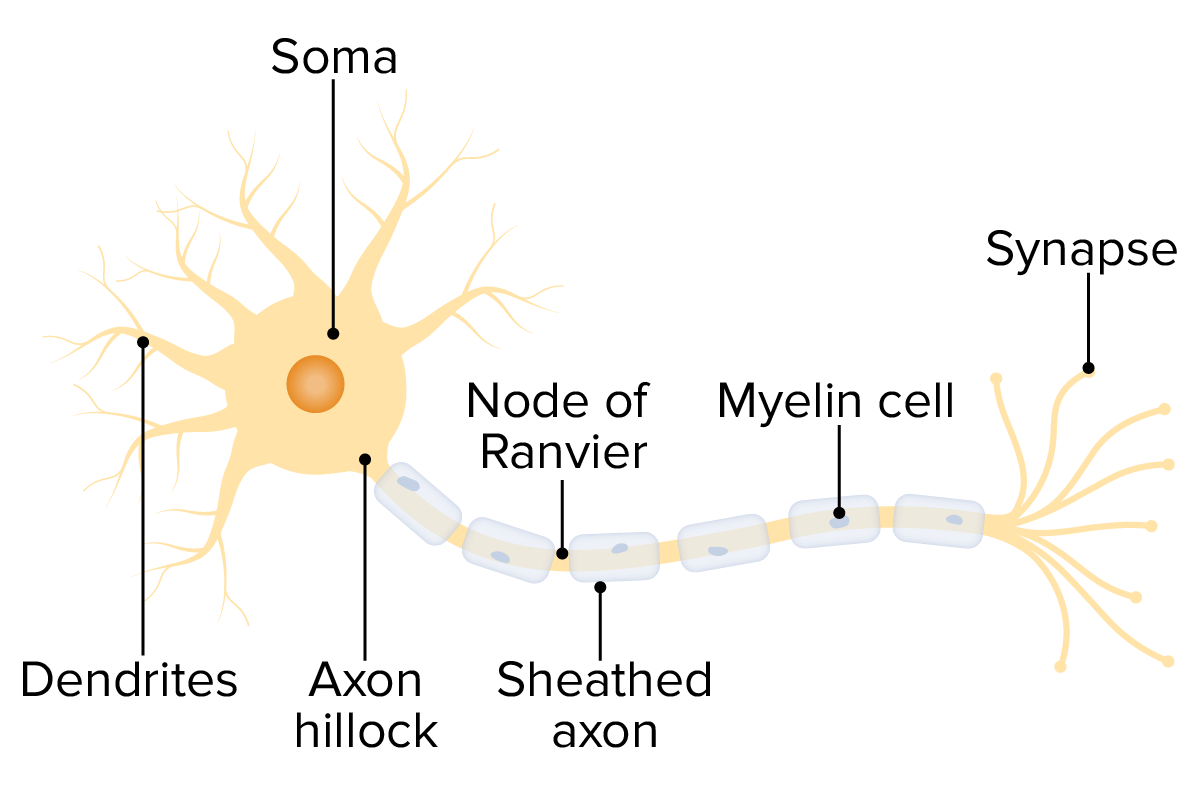Playlist
Show Playlist
Hide Playlist
AIDP: Treatment and Variants
-
Slides Acute Inflammatory Demyelinating Polyneuropathy.pdf
-
Download Lecture Overview
00:01 After an attack of Guillain-Barre there's a number of potential complications that can happen. 00:06 We like to see the early treatment in with early initiation of treatment. 00:10 We want to reduce the nadir of the illness and see spontaneous recovery over weeks, months, or sometimes years. 00:16 Occasionally, symptoms come back and there are a couple of considerations we need to have. 00:20 The first is recurrent AIDP. 00:22 This can happen after an initial attack of Guillain-Barre, patients can have recurrence of symptoms, but this is rare. 00:30 It occurs in less than 5% of cases. 00:33 It's characterized by recurrent weakness and numbness, after the initial attack. 00:37 Classically Guillain-Barre is a monophasic illness. 00:41 There's rapid onset early sub-acute onset of symptoms, it nadirs within 14 days, and symptoms spontaneously improve and do not recur. 00:51 Another consideration and a patient who develops worsening of symptoms early after their acute attack is a treatment related fluctuation. 01:00 This occurs as a result of continued immune destruction of nerves, which initially improves with immunomodulatory therapy, but then continues beyond the half-life of the treatment. 01:11 So patients are developing symptoms, we give them treatment. 01:15 That treatment works temporarily, but the disease is continuing to progress. 01:19 And so as the treatment stops and wears off, we see the continued progression of the disease and this is called a treatment related fluctuation. 01:26 Patients in this situation present with recurrent symptoms several weeks after the initial treatment of Guillain-Barre. 01:33 They have a nadir, a plateau, and then ultimately what we like to see recovery. 01:39 And then lastly, we may have the diagnosis wrong. 01:42 Patients that have continued worsening of symptoms. 01:45 More weakness after their initial presentation of Guillain-Barre. 01:48 May actually not have acute inflammatory demyelinating polyneuropathy, but chronic inflammatory demyelinating polyneuropathy. 01:56 A CIDP is a chronic onset condition, but occasionally it will present with a more fulminant acute presentation. 02:04 The disease does not nadir at four weeks like Guillain-Barre, but continues by definition to persist. 02:10 Symptoms persist beyond eight weeks. 02:13 This tends to be responsive to corticosteroids, unlike Guillain-Barre, and we do initiate corticosteroid treatment, but also use IVIg and plasmapheresis to manage these patients. 02:26 Now, let's talk about some of the variants of typical AIDP. 02:30 There are both axonal variants, as well as other variants. 02:34 The four that I would like for you to remember are acute, motor, axonal neuropathy, and that is exactly what it says. 02:41 It's acute and onset just like Guillain-Barre, but it's motor predominant. 02:45 There's no sensory symptoms, and it's an axonal neuropathy. 02:48 We don't see demyelinating features, we see axonal features on our nerve conduction. 02:53 The second is acute motor and sensory axonal neuropathy. 02:57 So this is very similar. It's acute and onset, but there's both motor and sensory deficits, and it's also an axonal neuropathy, and we don't see demyelinating features. 03:07 The important reason to call out these axonal variants of classic Guillain-Barre is that they have a worse prognosis. 03:14 Patients may have incomplete recovery and prolonged weakness and lack of improvement back to baseline. 03:21 There are also some other variants. 03:23 There is an autonomic variant that has prominent autonomic dysfunction, and dysautonomia, and then Miller-Fisher syndrome, which is a unique bulbar form of this disease. 03:33 Patients present with ophthalmoplegia, ataxia, and areflexia. 03:37 And that combination of those three symptoms that triad should point squarely to a diagnosis of Miller-Fisher syndrome. 03:44 This is important to recognize because prognosis is more favorable. 03:49 And some patients with Miller-Fisher syndrome will not even require treatment not IVIg or plasmapheresis, with a mild nadir and gradual or rapid improvement of symptoms over time.
About the Lecture
The lecture AIDP: Treatment and Variants by Roy Strowd, MD is from the course Acute Inflammatory Demyelinating Polyneuropathy (AIDP).
Included Quiz Questions
Which of the following is true of post-AIDP complications?
- Recurrence of AIDP happens in less than 5% of cases.
- If AIDP persists over 14 days, it is termed chronic inflammatory demyelinating polyneuropathy.
- Treatment fluctuation can happen for several years afterward.
- Chronic kidney disease is a common complication.
- Heart failure is a common complication.
Which of the following AIDP variants typically presents with ophthalmoplegia, ataxia, and areflexia?
- Miller-Fisher syndrome
- Guillain-Barré Syndrome
- Acute motor axonal neuropathy
- Acute motor and sensory axonal neuropathy
- Autonomic AIDP
Customer reviews
5,0 of 5 stars
| 5 Stars |
|
5 |
| 4 Stars |
|
0 |
| 3 Stars |
|
0 |
| 2 Stars |
|
0 |
| 1 Star |
|
0 |




